2. Leo CH, Jelinic M, Ng HH, Parry LJ, Tare M. 2019; Recent developments in relaxin mimetics as therapeutics for cardiovascular diseases. Curr Opin Pharmacol. 45:42–48. DOI:
10.1016/j.coph.2019.04.001. PMID:
31048209.

4. Dvir T, Bauer M, Schroeder A, Tsui JH, Anderson DG, Langer R, Liao R, Kohane DS. 2011; Nanoparticles targeting the infarcted heart. Nano Lett. 11:4411–4414. DOI:
10.1021/nl2025882. PMID:
21899318. PMCID:
PMC3192253.

5. Tan KX, Pan S, Jeevanandam J, Danquah MK. 2019; Cardiovascular therapies utilizing targeted delivery of nanomedicines and aptamers. Int J Pharm. 558:413–425. DOI:
10.1016/j.ijpharm.2019.01.023. PMID:
30660748.

6. Mahapatro A, Singh DK. 2011; Biodegradable nanoparticles are excellent vehicle for site directed in-vivo delivery of drugs and vaccines. J Nanobiotechnology. 9:55. DOI:
10.1186/1477-3155-9-55. PMID:
22123084. PMCID:
PMC3238292.

7. Sanna V, Pala N, Sechi M. 2014; Targeted therapy using nanotechnology: focus on cancer. Int J Nanomedicine. 9:467–483. DOI:
10.2147/IJN.S36654. PMID:
24531078. PMCID:
PMC3896284.
8. Calzoni E, Cesaretti A, Polchi A, Di Michele A, Tancini B, Emiliani C. 2019; Biocompatible polymer nanoparticles for drug delivery applications in cancer and neurodegenerative disorder therapies. J Funct Biomater. 10:4. DOI:
10.3390/jfb10010004. PMID:
30626094. PMCID:
PMC6463038.

10. Rin Jean S, Tulumello DV, Wisnovsky SP, Lei EK, Pereira MP, Kelley SO. 2014; Molecular vehicles for mitochondrial chemical biology and drug delivery. ACS Chem Biol. 9:323–333. DOI:
10.1021/cb400821p. PMID:
24410267.

11. Weissig V, Boddapati SV, Jabr L, D'Souza GG. 2007; Mitochondria-specific nanotechnology. Nanomedicine (Lond). 2:275–285. DOI:
10.2217/17435889.2.3.275. PMID:
17716174.

12. Lin R, Zhang P, Cheetham AG, Walston J, Abadir P, Cui H. 2015; Dual peptide conjugation strategy for improved cellular uptake and mitochondria targeting. Bioconjug Chem. 26:71–77. DOI:
10.1021/bc500408p. PMID:
25547808. PMCID:
PMC4306504.

15. Yu GS, Han J, Ko KS, Choi JS. 2014; Cationic oligopeptide-conjugated mitochondria targeting sequence as a novel carrier system for mitochondria. Macromol Res. 22:42–46. DOI:
10.1007/s13233-014-2003-3.

17. Bae Y, Joo C, Kim GY, Ko KS, Huh KM, Han J, Choi JS. 2019; Cationic oligopeptide-functionalized mitochondria targeting sequence show mitochondria targeting and anticancer activity. Macromol Res. 27:1071–1080. DOI:
10.1007/s13233-019-7153-x.

18. Xie M, Hu B, Wang Y, Zeng X. 2014; Grafting of gallic acid onto chitosan enhances antioxidant activities and alters rheological properties of the copolymer. J Agric Food Chem. 62:9128–9136. DOI:
10.1021/jf503207s. PMID:
25198516.

19. Perron NR, Brumaghim JL. 2009; A review of the antioxidant mechanisms of polyphenol compounds related to iron binding. Cell Biochem Biophys. 53:75–100. DOI:
10.1007/s12013-009-9043-x. PMID:
19184542.

20. Bae Y, Green ES, Kim GY, Song SJ, Mun JY, Lee S, Park JI, Park JS, Ko KS, Han J, Choi JS. 2016; Dipeptide-functionalized polyamidoamine dendrimer-mediated apoptin gene delivery facilitates apoptosis of human primary glioma cells. Int J Pharm. 515:186–200. DOI:
10.1016/j.ijpharm.2016.09.083. PMID:
27732896.

21. Bae Y, Jung MK, Lee S, Song SJ, Mun JY, Green ES, Han J, Ko KS, Choi JS. 2018; Dequalinium-based functional nanosomes show increased mitochondria targeting and anticancer effect. Eur J Pharm Biopharm. 124:104–115. DOI:
10.1016/j.ejpb.2017.12.013. PMID:
29305141.

22. AshaRani PV, Low Kah Mun G, Hande MP, Valiyaveettil S. 2009; Cytotoxicity and genotoxicity of silver nanoparticles in human cells. ACS Nano. 3:279–290. DOI:
10.1021/nn800596w. PMID:
19236062.

23. Holder AL, Goth-Goldstein R, Lucas D, Koshland CP. 2012; Particle-induced artifacts in the MTT and LDH viability assays. Chem Res Toxicol. 25:1885–1892. DOI:
10.1021/tx3001708. PMID:
22799765. PMCID:
PMC3446248.

24. Yang Y, Xiang Y, Xu M. 2015; From red to green: the propidium iodide-permeable membrane of Shewanella decolorationis S12 is repairable. Sci Rep. 5:18583. DOI:
10.1038/srep18583. PMID:
26687136. PMCID:
PMC4685271.

25. Xiang L, Xie G, Liu C, Zhou J, Chen J, Yu S, Li J, Pang X, Shi H, Liang H. 2013; Knock-down of glutaminase 2 expression decreases glutathione, NADH, and sensitizes cervical cancer to ionizing radiation. Biochim Biophys Acta. 1833:2996–3005. DOI:
10.1016/j.bbamcr.2013.08.003. PMID:
23954443.

26. Soumya RS, Vineetha VP, Salin Raj P, Raghu KG. 2014; Beneficial properties of selenium incorporated guar gum nanoparticles against ischemia/reperfusion in cardiomyoblasts (H9c2). Metallomics. 6:2134–2147. DOI:
10.1039/C4MT00241E. PMID:
25307064.

27. He H, Li DW, Yang LY, Fu L, Zhu XJ, Wong WK, Jiang FL, Liu Y. 2015; A novel bifunctional mitochondria-targeted anticancer agent with high selectivity for cancer cells. Sci Rep. 5:13543. DOI:
10.1038/srep13543. PMID:
26337336. PMCID:
PMC4559806.

28. Perelman A, Wachtel C, Cohen M, Haupt S, Shapiro H, Tzur A. 2012; JC-1: alternative excitation wavelengths facilitate mitochondrial membrane potential cytometry. Cell Death Dis. 3:e430. DOI:
10.1038/cddis.2012.171. PMID:
23171850. PMCID:
PMC3542606.

29. Sancho P, Galeano E, Nieto E, Delgado MD, García-Pérez AI. 2007; Dequalinium induces cell death in human leukemia cells by early mitochondrial alterations which enhance ROS production. Leuk Res. 31:969–978. DOI:
10.1016/j.leukres.2006.11.018. PMID:
17250890.

30. Madani F, Lindberg S, Langel U, Futaki S, Gräslund A. 2011; Mechanisms of cellular uptake of cell-penetrating peptides. J Biophys. 2011:414729. DOI:
10.1155/2011/414729. PMID:
21687343. PMCID:
PMC3103903.

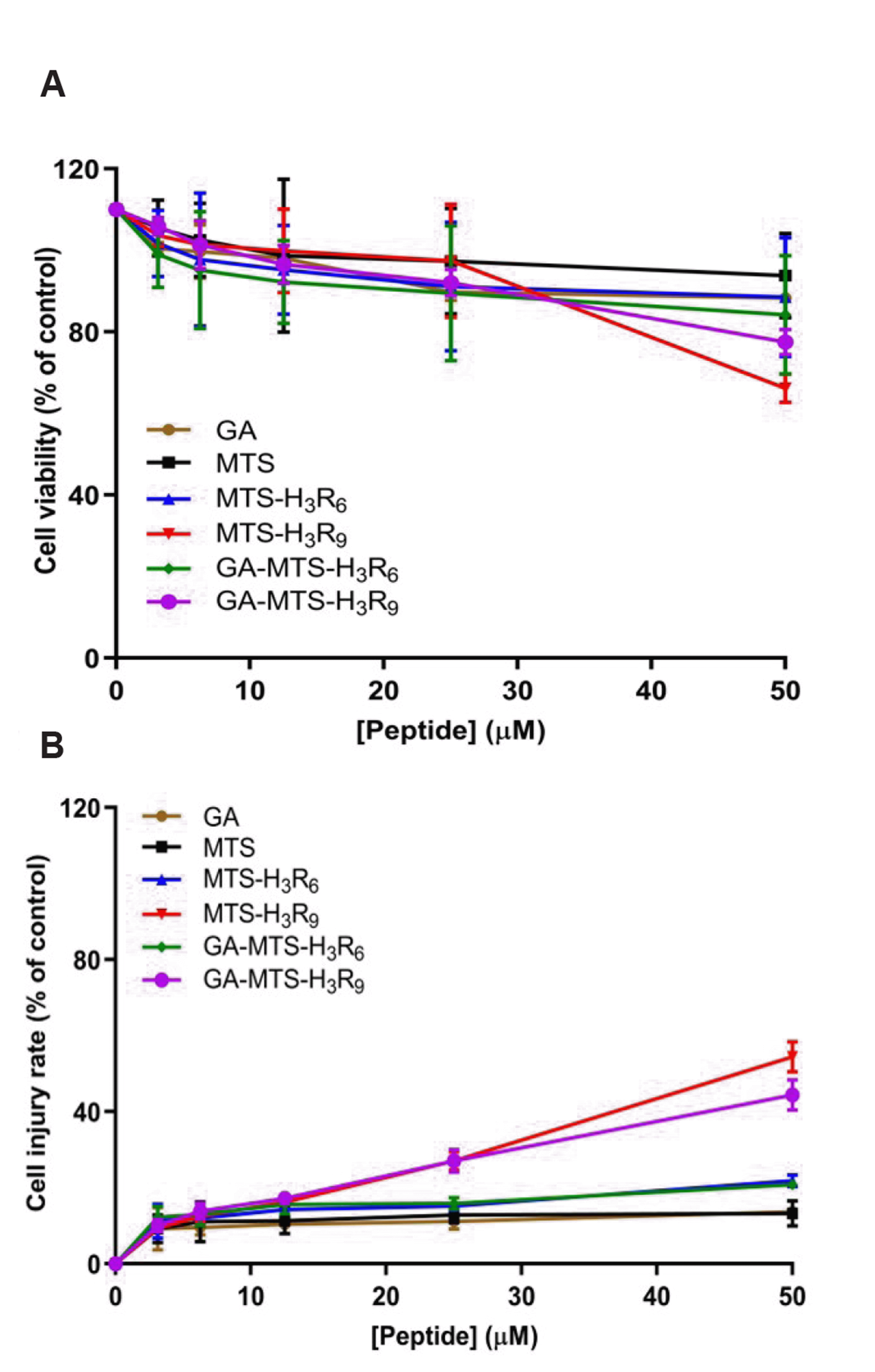
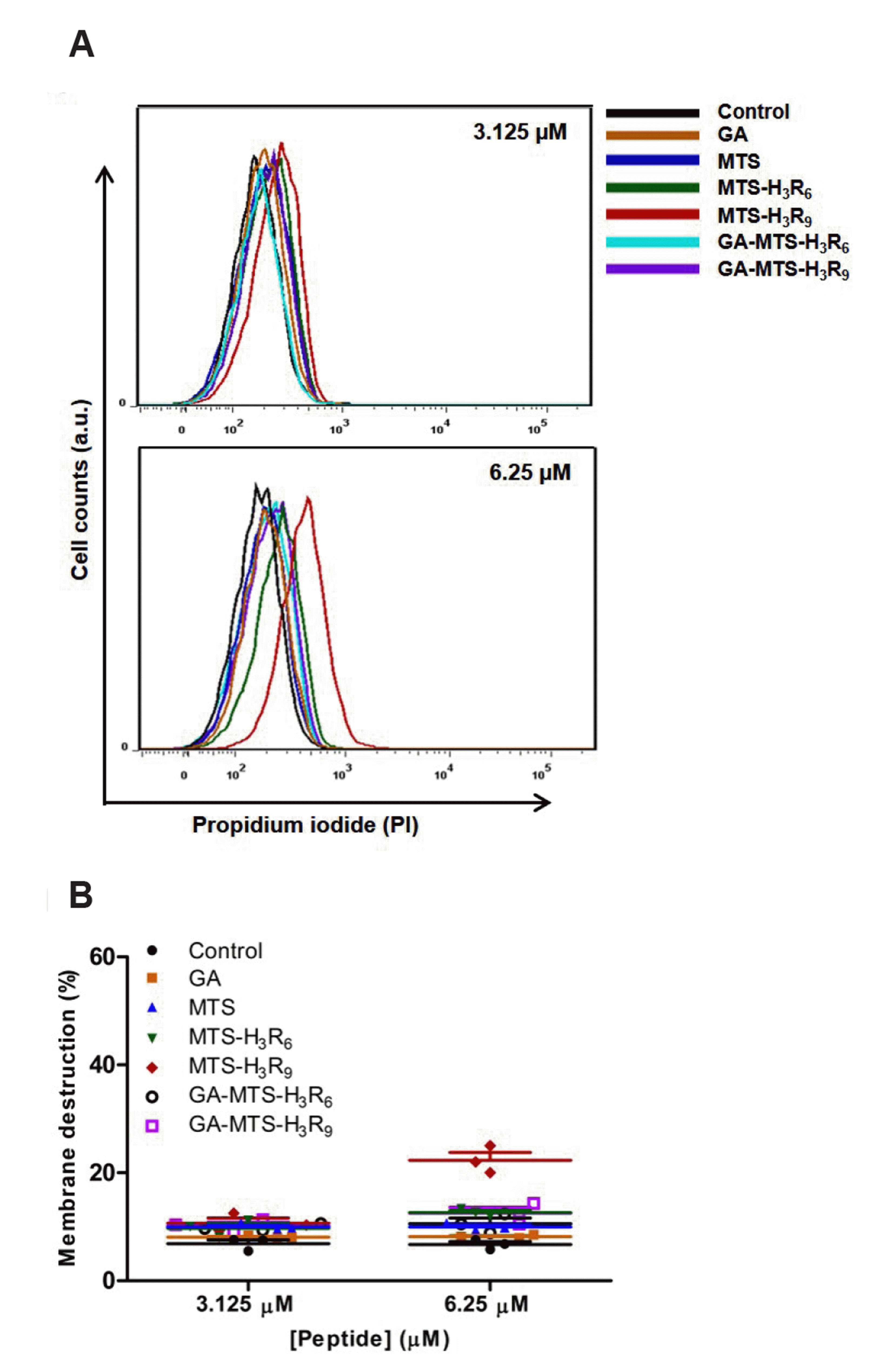
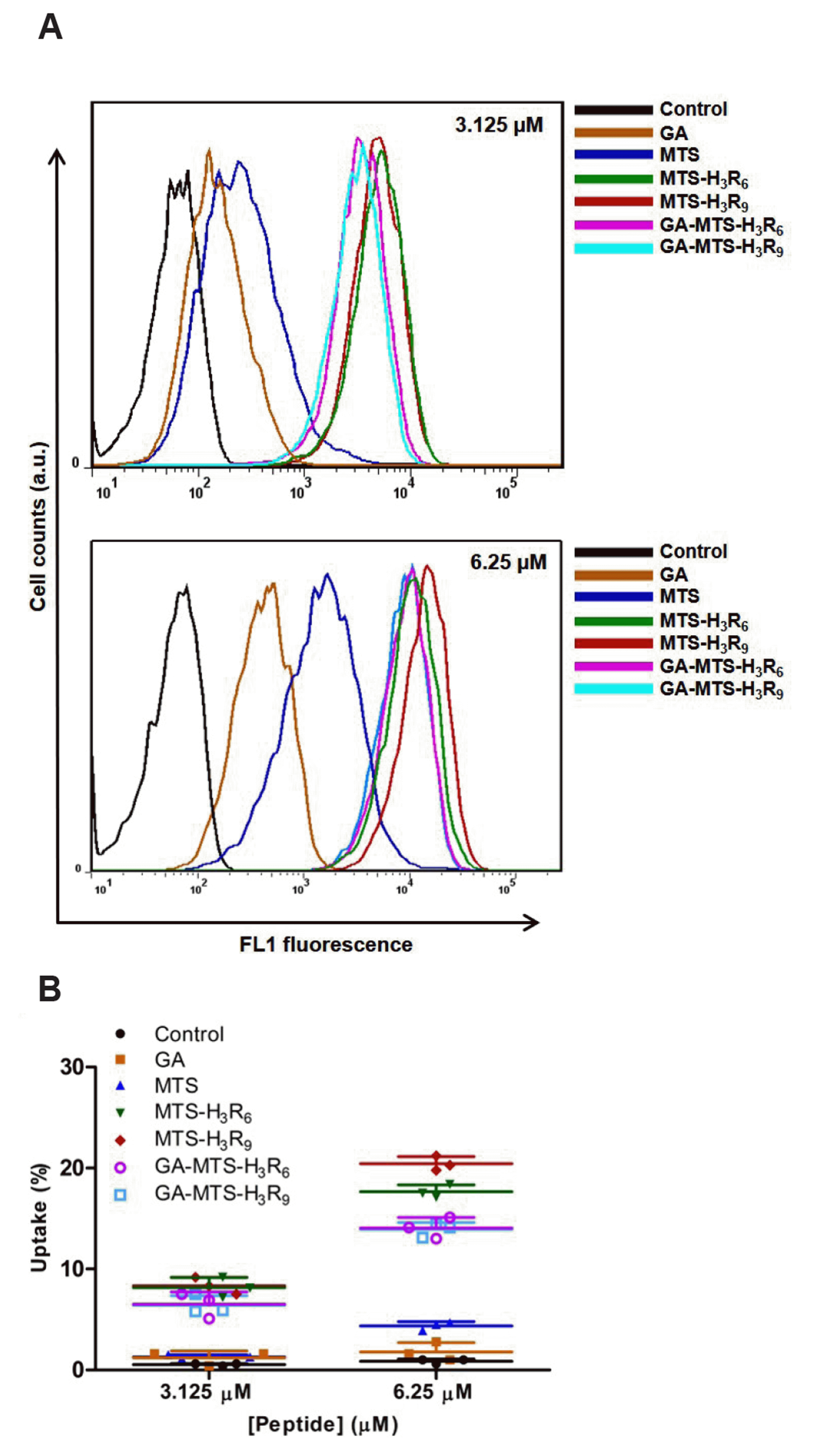
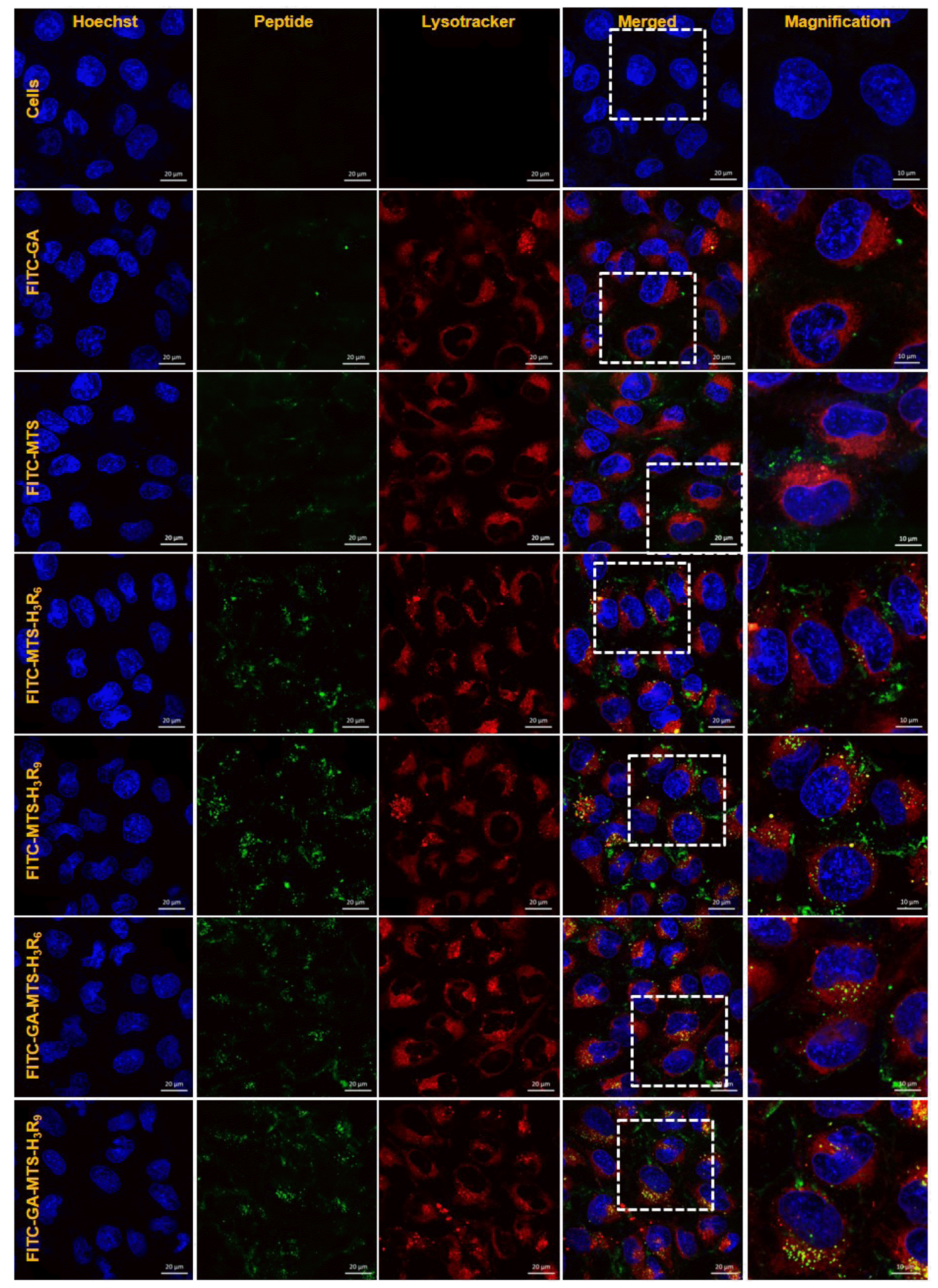
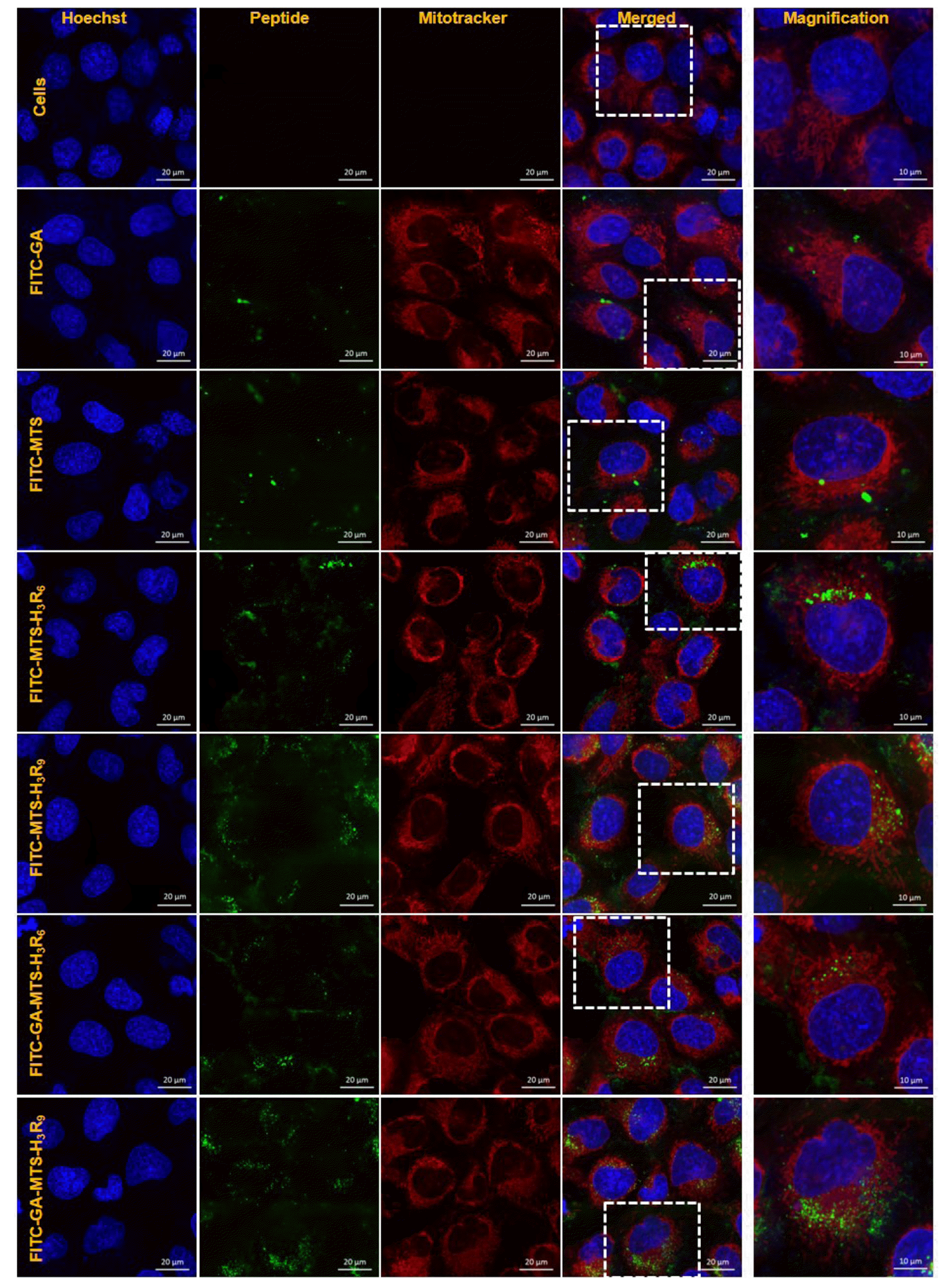
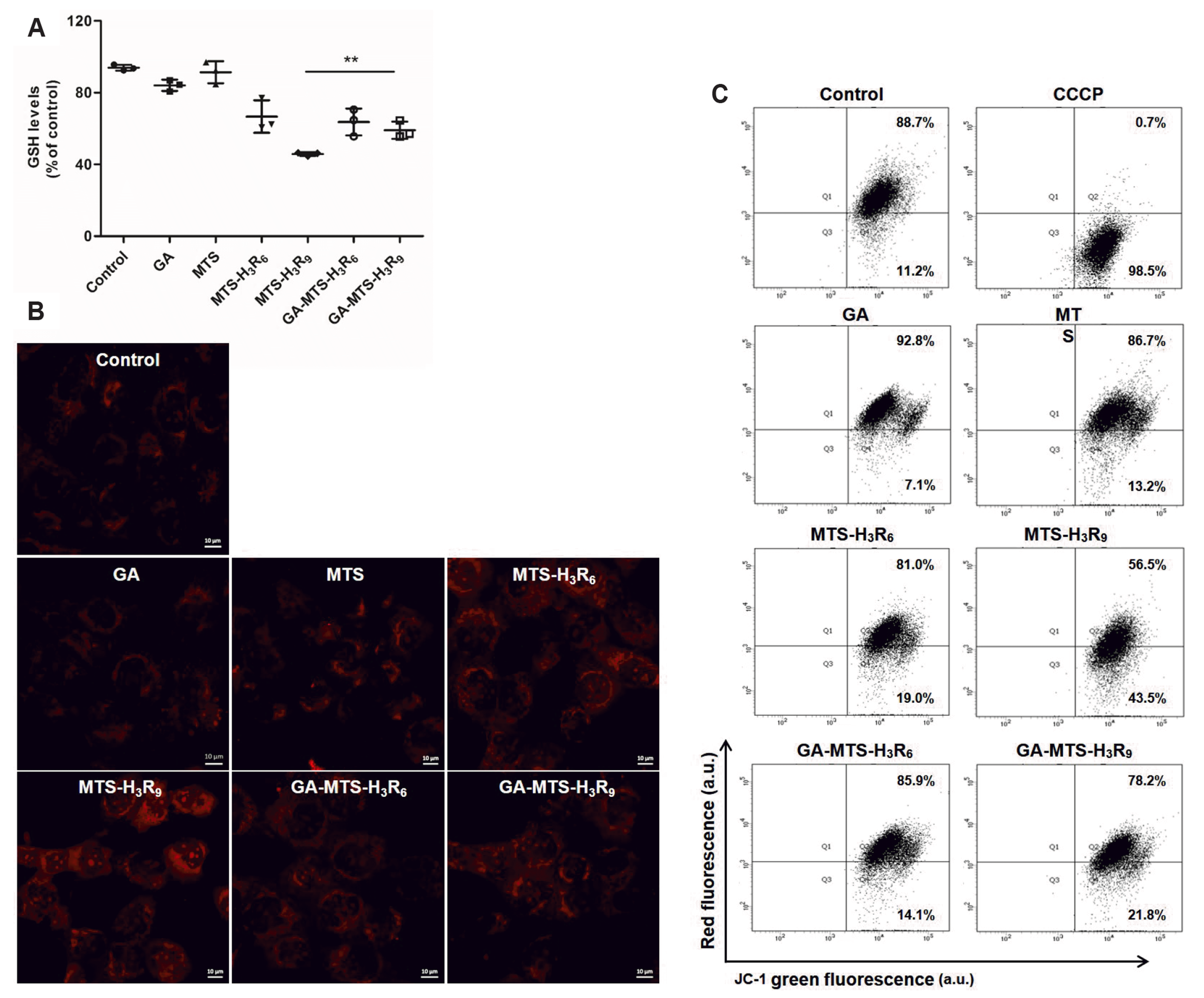
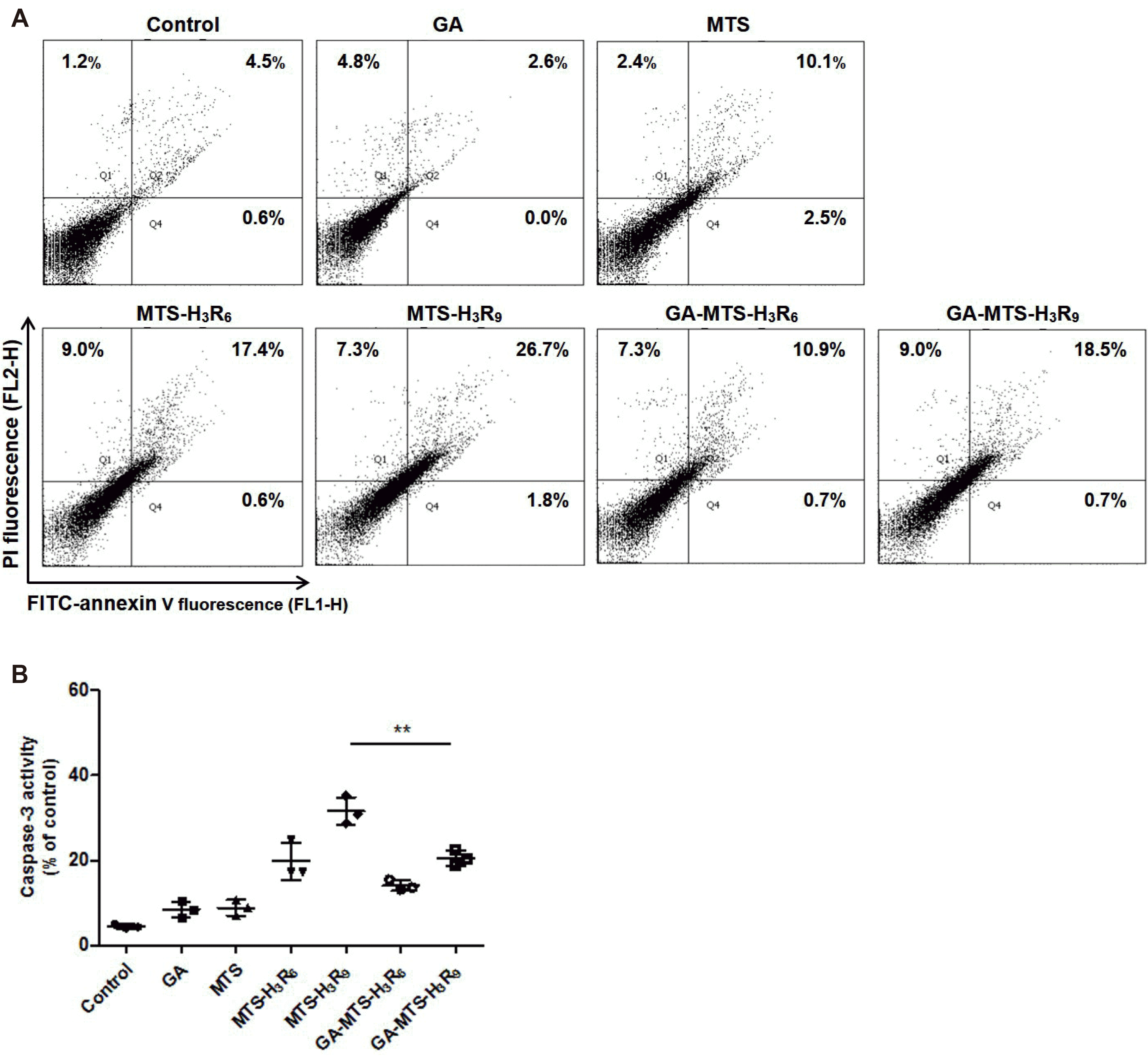




 PDF
PDF Citation
Citation Print
Print


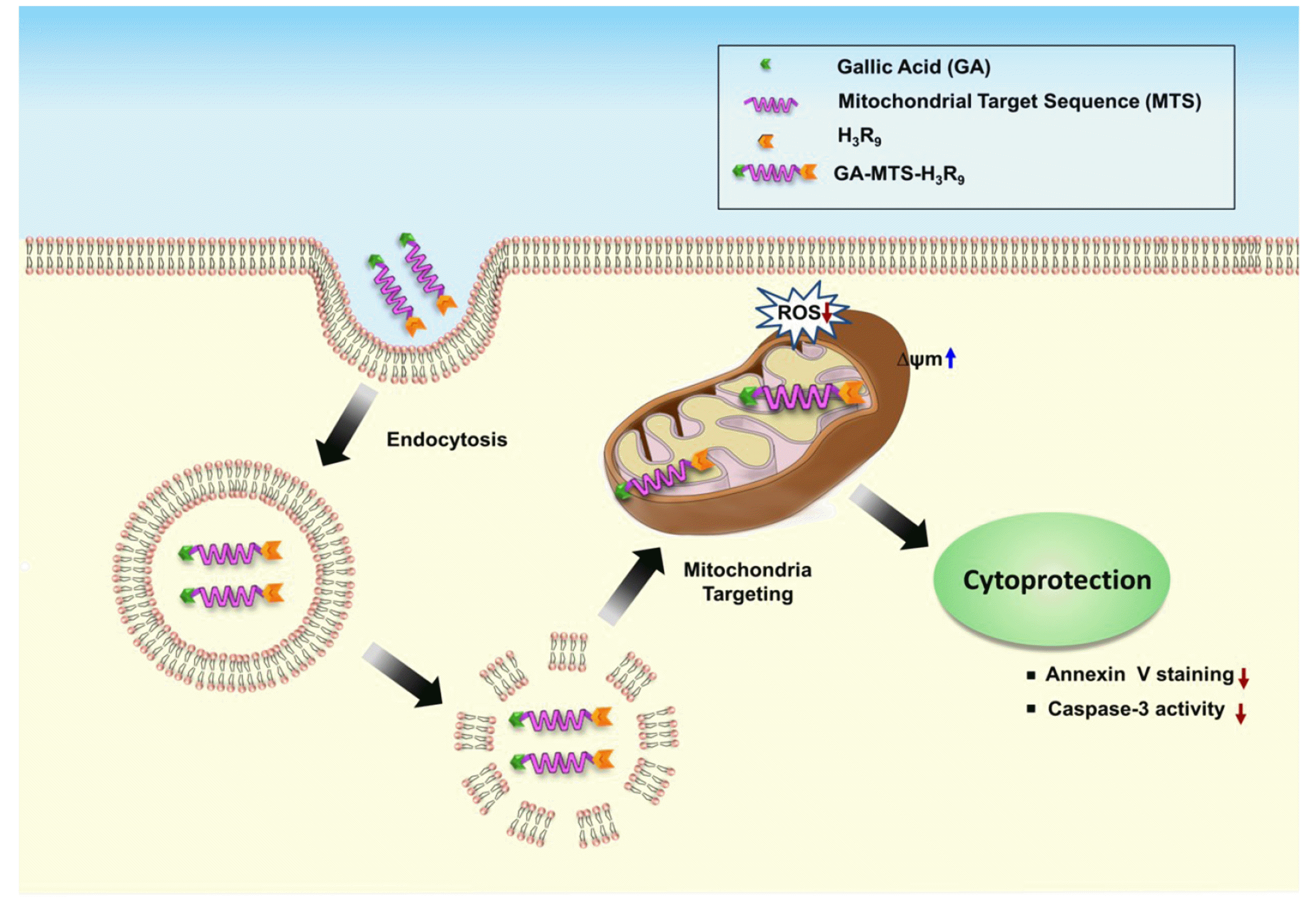
 XML Download
XML Download